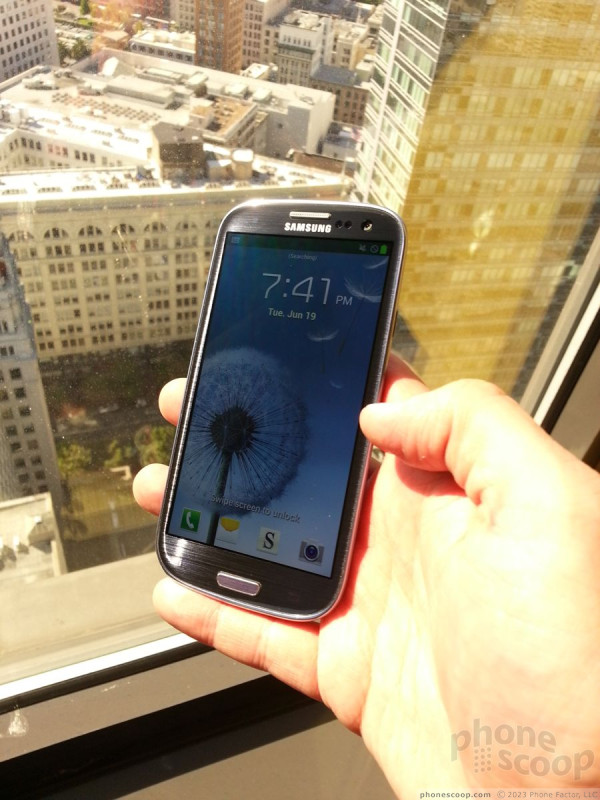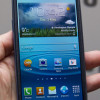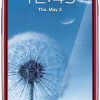Review: Samsung Galaxy S III
Back in 2010, Samsung pulled a major coup and announced the Galaxy S on AT&T, Sprint, T-Mobile USA, and Verizon Wireless all at the same event in New York City. It was the true inflection point of Samsung's smartphone business in the U.S. The Galaxy S eventually became a smash hit on all four carriers. Samsung topped it with the Galaxy S II in 2011. Here we are in 2012, and the Galaxy S III takes Samsung's evolving hardware and software to the next level.
Let's just get this out of the way: The GS3 is the best hardware Samsung has designed and manufactured. If you've regularly read my reviews of Samsung's smartphones, you know that I've complained about cheap materials and sometimes questionable assembly. The GS3 shatters those preconceptions. It is solid as a rock, feels amazing to use all day long, and though it's not made of brushed metal, the polycarbonate (i.e., fancy plastic) is leaps and bounds better than the old plastic shells of the Galaxy S and S II.
I have to give Samsung some credit for the colors. Blue may not be for everyone, but I am sick to death of black smartphones. The "pebble blue" is an attractive hue that impresses when outside under sunlight. The white is also nice. I wish the white had more of a matte finish than glossy, but the silver accents around the outer edge look great.
I think the overall shape and design of the GS3 is a bit conservative and simplistic, but I understand the angle Samsung is shooting for with its "inspired by nature" concept. Samsung needs the GS3 to appeal to as many potential customers as possible, so truly odd, unique designs are out. The edges are absolutely smooth; there isn't a hard angle or sharp edge anywhere on the GS3. Samsung says it was inspired by the shape and feel of a river stone. It feels like you're holding silk. Another way to say it: the GS3 is really slippery. It's thin and slippery enough that it will glide into any pocket in which you care to store the device.
Thanks to the 4.8-inch display, the GS3 is a large phone. It's not Galaxy Note in proportions, but it's still big and somewhat weighty. Samsung did its best to minimize the bezel around the display to create the smallest footprint possible, but there's only so much you can do with a screen this large. Above the display, the user-facing camera and sensors are plainly visible. Below the display, there are two capacitive buttons: one for the menu functions and one for going back. Samsung has foregone Android 4.0's dedicated multitasking key in favor of an (arguably more useful) menu key. These two buttons are separated by a physical home button. The home button has excellent travel and feedback and can be found quite easily by the user's thumb. A long press opens the multitasking tool, and a double press brings up the S Voice app.
There are few other controls offered by the GS3. The volume toggle is on the left edge of the phone. It's a bit on the small side, and could use some nubs to make it stand out better, but that wouldn't gel with the rounded and smooth feel of the device. Bottom line, the volume toggle is perhaps the weakest element of the hardware. The power/lock button is opposite on the right edge. It, too, is a bit small, but is still easy to find and offers decent travel and feedback. I'd prefer to have the lock button on top, but Samsung typically puts it on the side. There's a 3.5mm headset jack on the top and a microUSB port on the bottom.
Samsung has bucked recent industry trends and offers a removable back cover on the GS3. It's no problem to remove, and lets users access the battery, microSD port, and SIM card slot. The GS3 uses the microSIM card that's become popular in devices such as the iPhone 4/4S, HTC One X, and Nokia Lumia 900. This means if you're upgrading from a Galaxy S or SII, you won't be able to use the same old card.
The GS3 also includes a near-field communications chip for tap-and-go actions. The NFC chip itself is built into the battery. That's something to keep in mind if you choose to switch out the stock battery: you may lose the NFC capabilities.
To put it simply, few devices in the rosters of U.S. carriers are going to offer more overall appeal that the Samsung Galaxy S III. It's a damned fine piece of hardware.

























 Hands-On with the Samsung Galaxy S III
Hands-On with the Samsung Galaxy S III
 Garnet Red Galaxy S III Hits AT&T Stores July 29
Garnet Red Galaxy S III Hits AT&T Stores July 29
 Samsung Galaxy S III (T-Mobile)
Samsung Galaxy S III (T-Mobile)
 Samsung Galaxy S III (AT&T)
Samsung Galaxy S III (AT&T)







